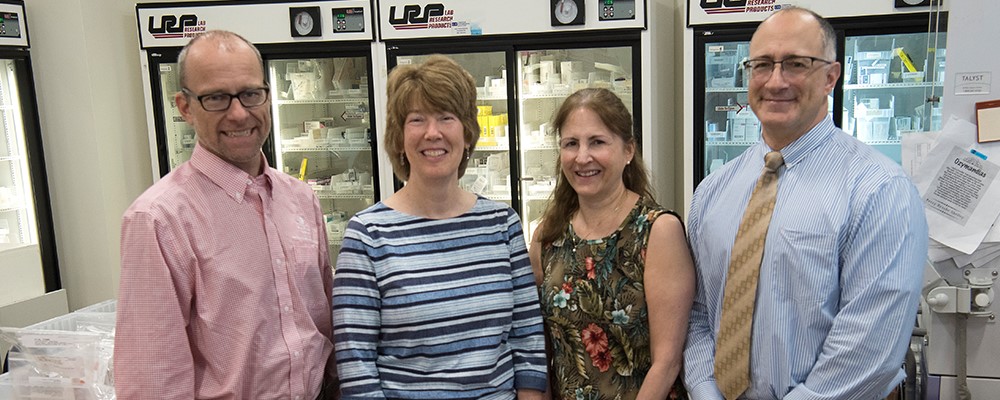
With an estimated 30 million people in the United States having diabetes, insulin is one of the most frequently prescribed drugs in a hospital.
But when insulin is administered to hospitalized patients, the process produces waste. And in addition to the waste potential, insulin is a “look-alike” medication; there can be confusion among insulin products and mix-ups between insulin and other medications.
To cut down on waste and reduce risk, Stony Brook University Hospital (SBUH) has changed its medication distribution process for insulin. As a result of the hospital’s efforts, annual insulin waste has been reduced from 460 to 105 pounds, reducing waste fees by $270 per year. And SBUH is now keeping approximately 2,500 vials of insulin annually out of the waste stream.
SBUH staff initially decided to purchase the smallest available vials of insulin for each type of insulin purchased, label and dispense each vial to be used for an individual patient only, and store only emergency doses of insulin in automated dispensing cabinets.
This approach greatly reduced insulin errors. But at the same time, it greatly increased the amount of waste generated.
Since many presentations of insulin contain a small amount of the preservative M-cresol, considered an RCRA (Resource Conservation and Recovery Act) hazardous waste, it was decided that insulin waste at Stony Brook would be disposed of in a separate waste container and collected as RCRA hazardous waste.
After receiving new waste containers for insulin, the pharmacy staff soon realized how much insulin was disposed of on a daily basis, because the containers filled up quickly.
The hospital wanted to reduce this level of waste. Their insulin waste reduction initiative focused on one type of insulin only. Insulin glargine was chosen because this type of insulin is dosed only once or twice per day and thus would not have as large an impact on nursing workflow as would the more rapid-acting insulin products.
The hospital began stocking insulin glargine in automated dispensing machines throughout the hospital; the drug was no longer given to patients in individual vials. To facilitate adoption by nursing and streamline the workflow, a special program and printer were procured to produce barcoded labels to attach to the vials being drawn from the automated dispensing machines. The nurse, upon drawing up the insulin glargine dose, could remove a barcoded label and adhere it to the syringe, enabling barcode scanning at the bedside. This also allowed the nurse to enter the number of units administered to the patient into the electronic medical record.
In the nine months prior to the insulin waste reduction project’s start in October 2017, on average 320 vials of insulin glargine were purchased by the hospital per month. In October 2017, the first month of the project, that number was reduced to 124 vials purchased per month. The number steadily declined as more areas of the hospital were added and nurses became accustomed to the new process. In 2018, the monthly average number of purchased vials decreased to 106 vials per month. This represents an estimated $18,000 monthly savings, or $216,000 annually, and approximately 2,500 fewer vials of insulin annually in the waste stream.
Going forward, the success Stony Brook experienced with changing its distribution system for insulin glargine could be used for other multiple-dose medications as well.

